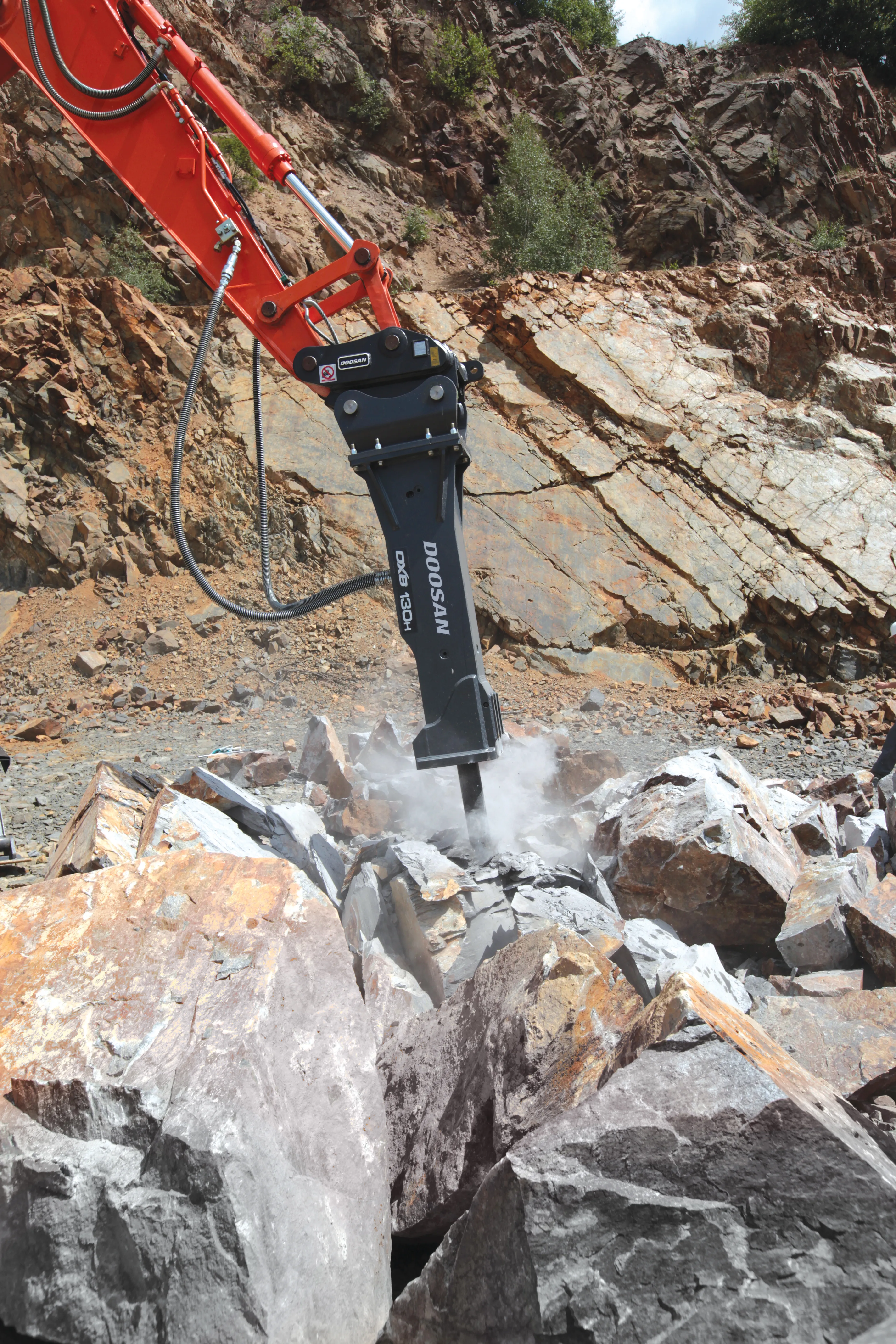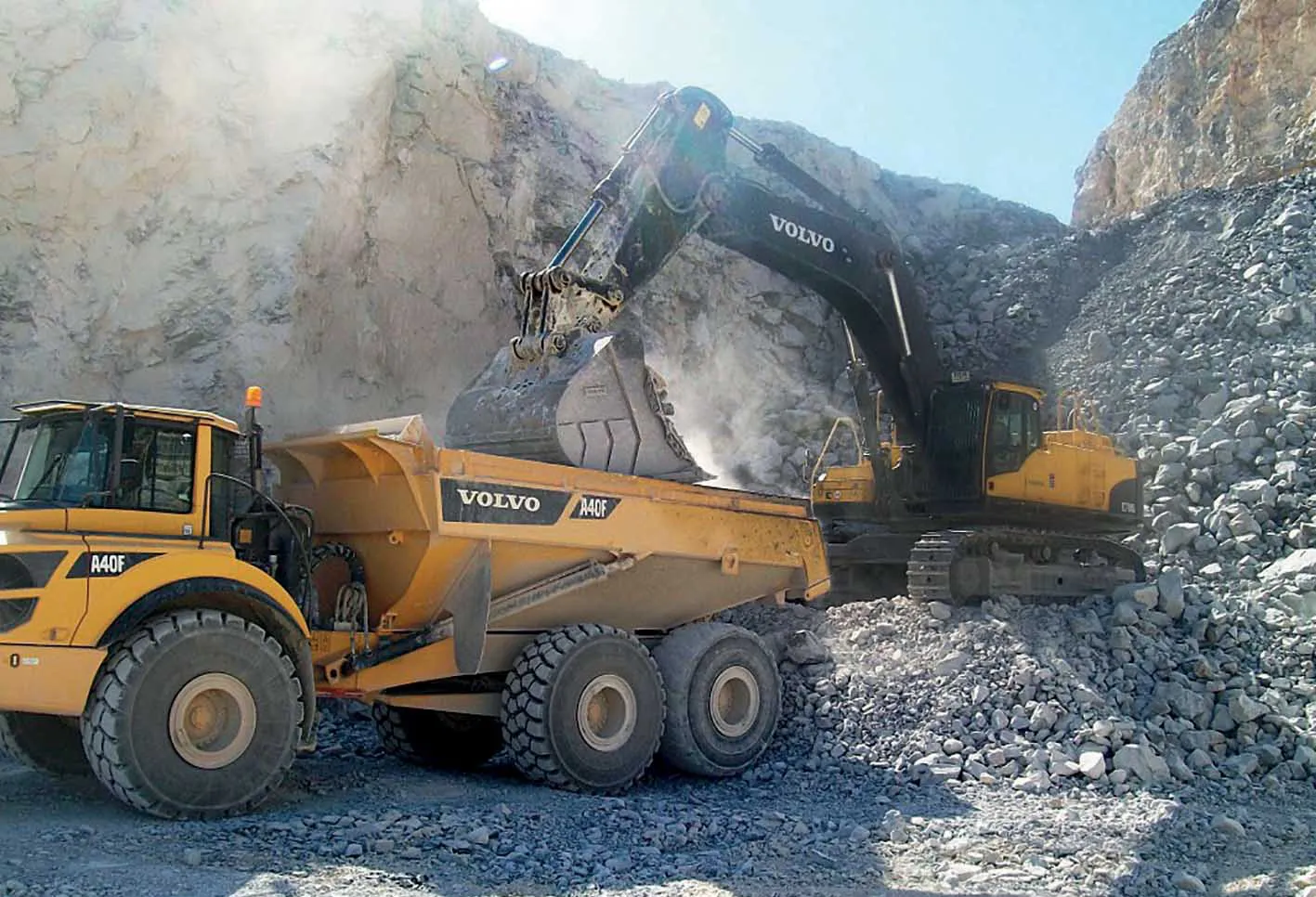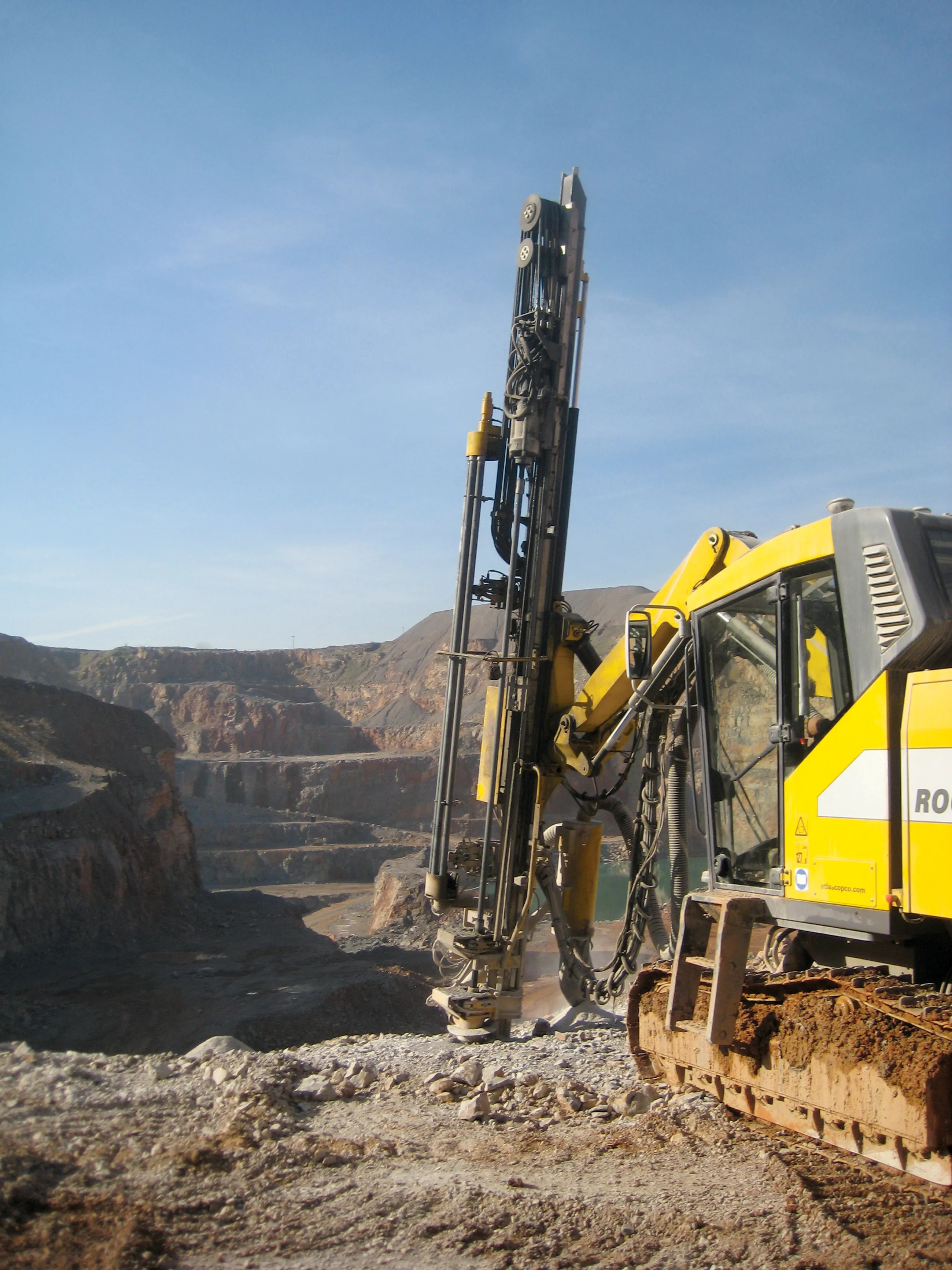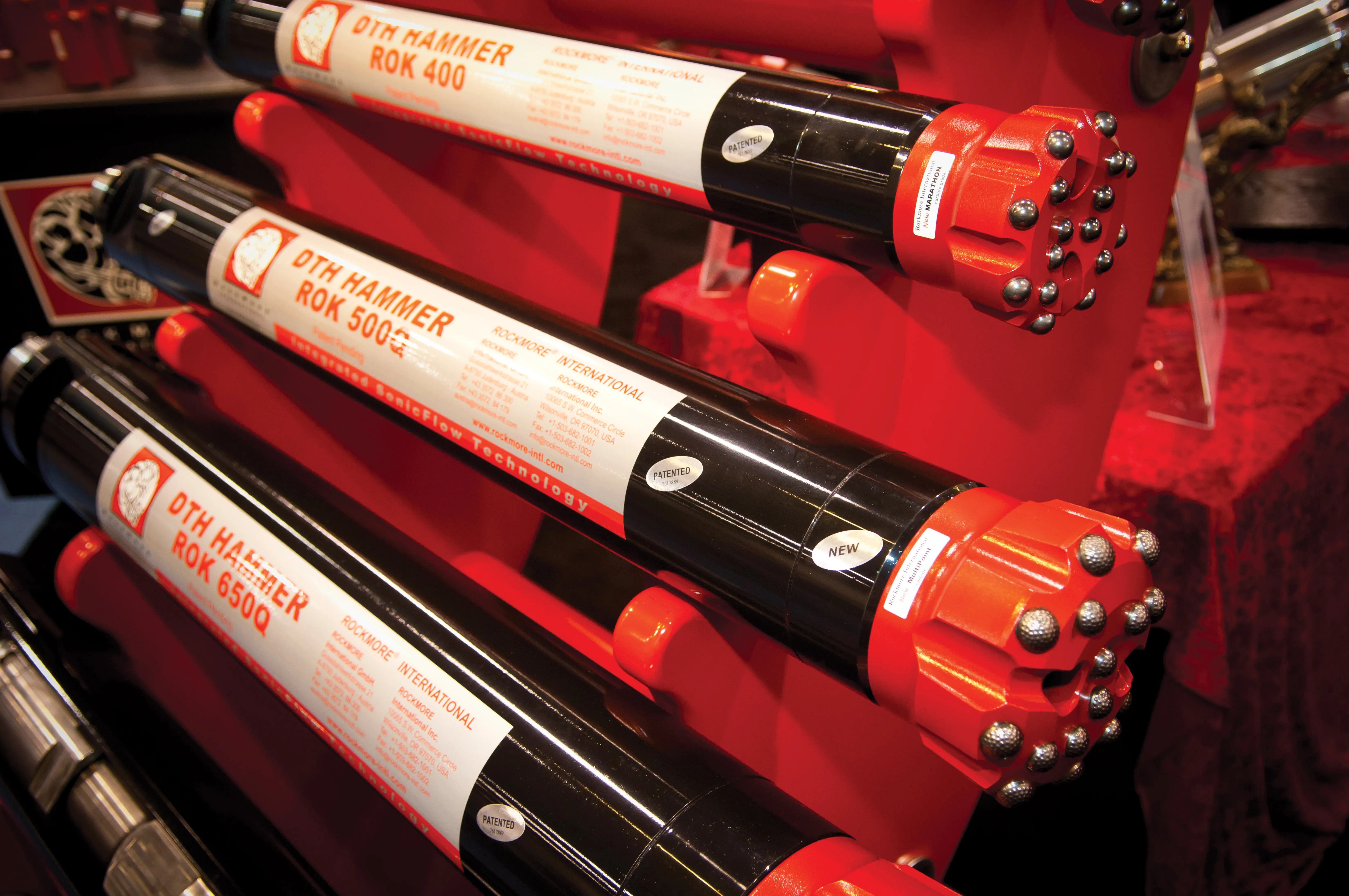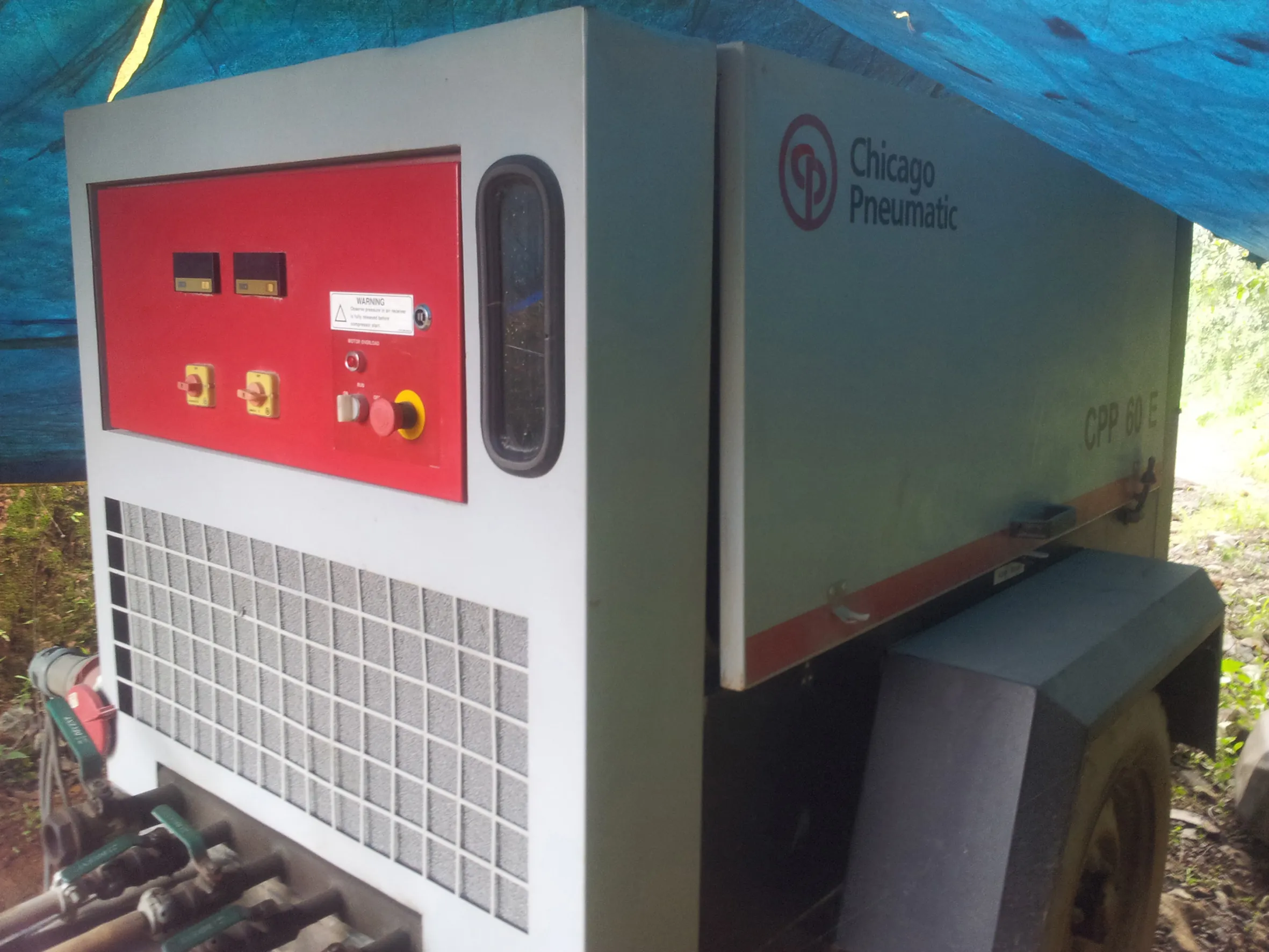
Hydraulic breakers and compressors from Chicago Pneumatic are proving productive in India’s expanding granite building stone industry.
The Kerala-based granite quarry, National Granite and Hollow Bricks, is successfully using CP1150 and RX22 hydraulic breakers as well as a CPP60E portable air compressor for its key breaking and drilling operations.
Located in the Kannur district of Kerala, in southern India, National Granite and Hollow Bricks currently employs 40 people and is a leading producer of granite.
Resistant to wear and tear as well as weathering, this material is currently in demand across the construction industry, with India being one of the largest exporters of granite worldwide.
As part of the quarrying process, the granite rocks resulting from primary blasting require secondary breaking to fit into the jaw crushers.
National Granite opted to use equipment from
Having clocked 10,000 and 5,000 hours respectively, the firm’s CP1150 and RX22 are helping to increase the quarry’s overall productivity with low maintenance costs.
Chicago Pneumatic’s medium breaker range features dust wipers and ventilation ports for better dust protection, suiting them to use in quarrying applications.
Chicago Pneumatic equipment is also helping National Granite with its primary drilling operations, which precede the blasting phase. In order to effectively power its drills to drill holes in the rocks, the quarry is currently relying on a CPP60E portable air compressor, which has already clocked 5,000 hours of reliable service.


